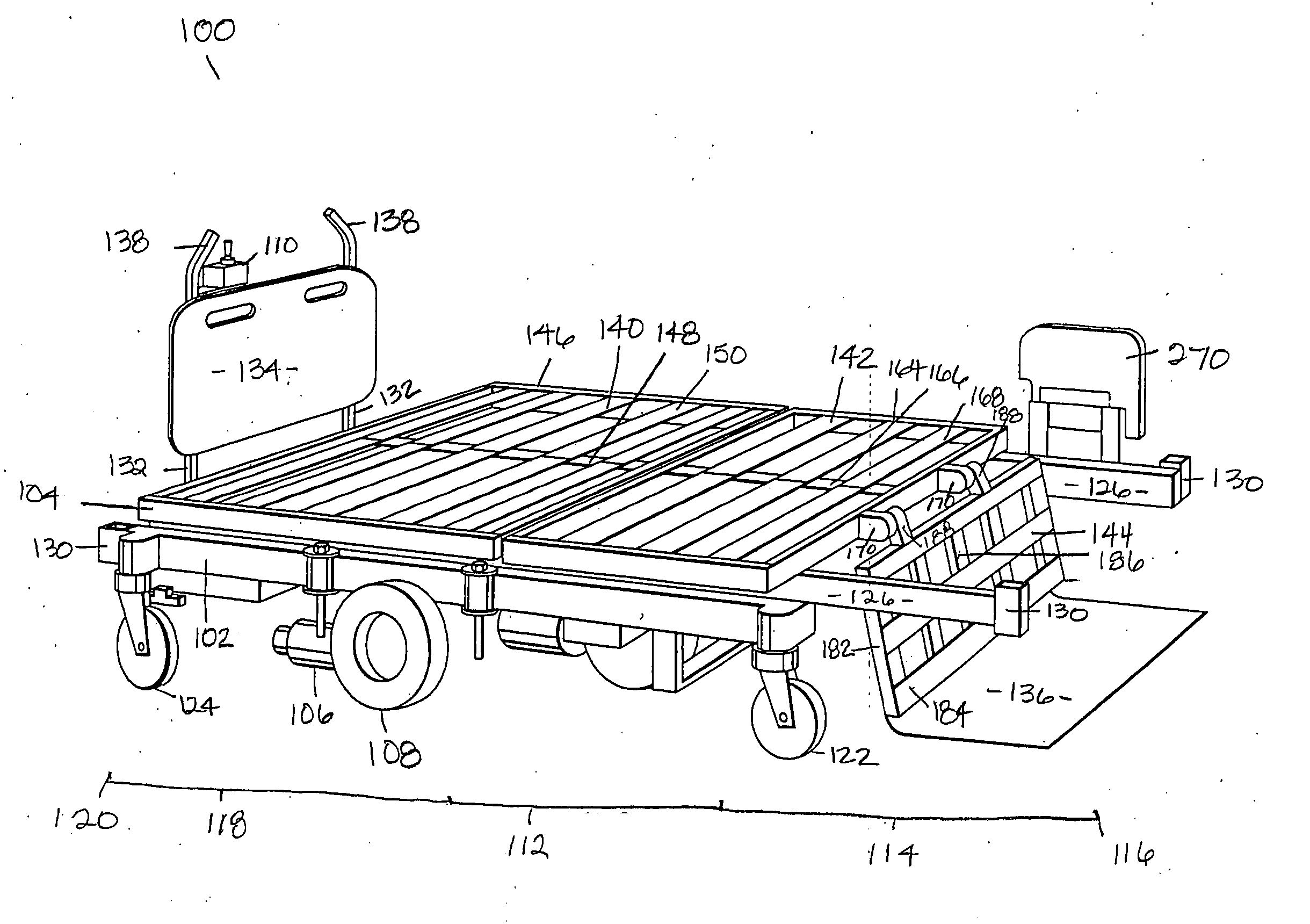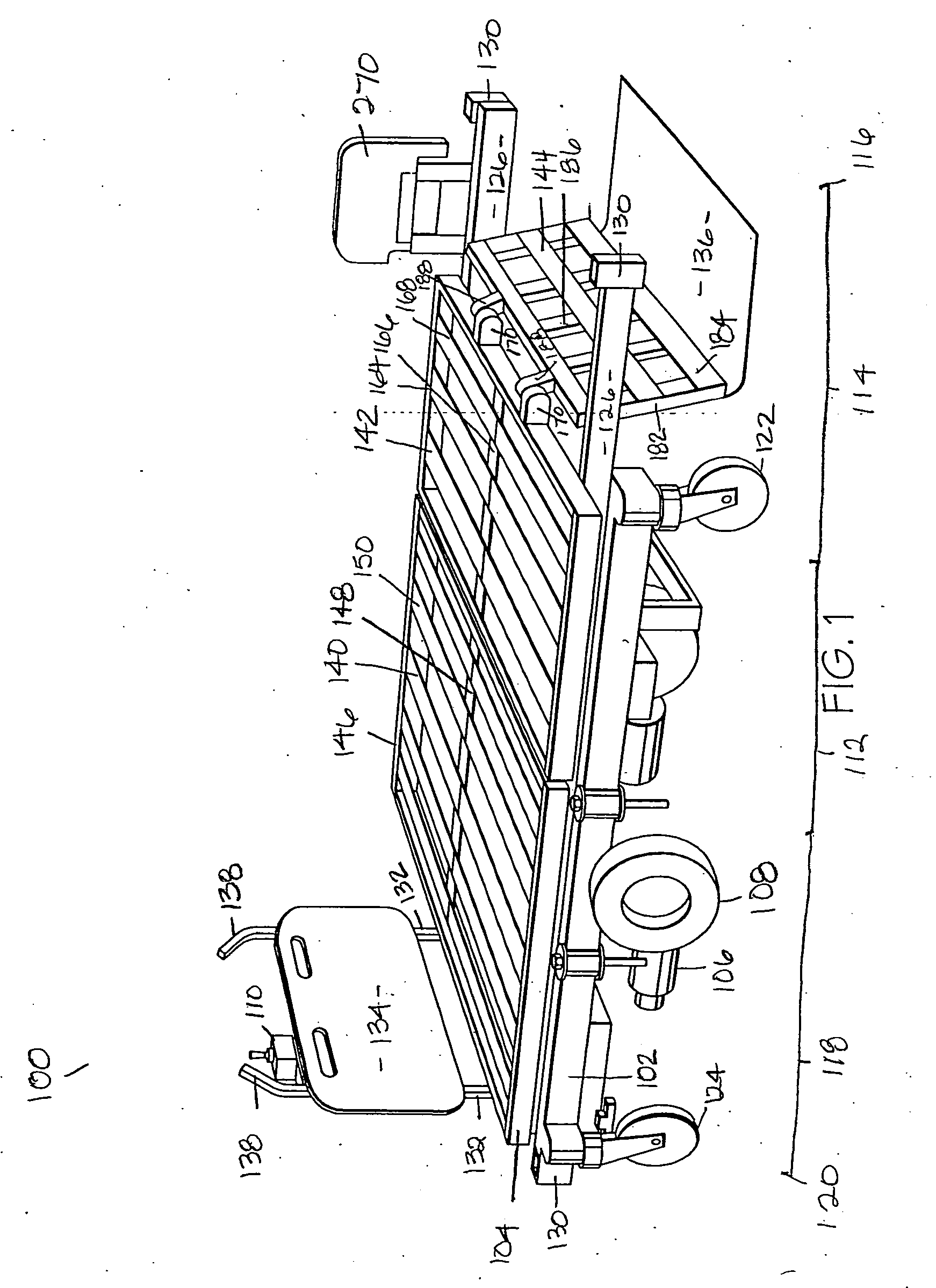Multipositional bariatric bed
a bariatric bed and multi-position technology, applied in the field of health care industry, can solve the problems of high cost of difficult physical lifting and positioning of bariatric patients, and difficulty in assisting health care providers or workers in removing and positioning bariatric patients,
- Summary
- Abstract
- Description
- Claims
- Application Information
AI Technical Summary
Benefits of technology
Problems solved by technology
Method used
Image
Examples
Embodiment Construction
[0026] Referring now to the drawings in greater detail, and initially to FIGS. 1, 2 and 14, one embodiment of a multipositional bariatric bed for accommodating an obese person is represented by the reference numeral 100. The bariatric bed 100 includes generally a base frame 102, a patient support assembly 104 mounted onto the base frame 102, a drive assembly 106 having a pair of drive wheels 108 for propelling the bed 100 in a variety of movement patterns, and a control system 110 directing operation of the drive assembly 106 according to user selections.
[0027] The base frame 102 of the bed 100 includes a center portion 112, a forward portion 114 extending from the center portion 112 to a forward end 116, and a back or aft portion 118 extending from the center portion 112 to a back end 120 in the opposite direction of the forward end 116. A central longitudinal axis of the bed 100 bisects the base frame 102 and may be used for positioning of the drive assembly 106, as will be discu...
PUM
 Login to View More
Login to View More Abstract
Description
Claims
Application Information
 Login to View More
Login to View More - R&D
- Intellectual Property
- Life Sciences
- Materials
- Tech Scout
- Unparalleled Data Quality
- Higher Quality Content
- 60% Fewer Hallucinations
Browse by: Latest US Patents, China's latest patents, Technical Efficacy Thesaurus, Application Domain, Technology Topic, Popular Technical Reports.
© 2025 PatSnap. All rights reserved.Legal|Privacy policy|Modern Slavery Act Transparency Statement|Sitemap|About US| Contact US: help@patsnap.com



